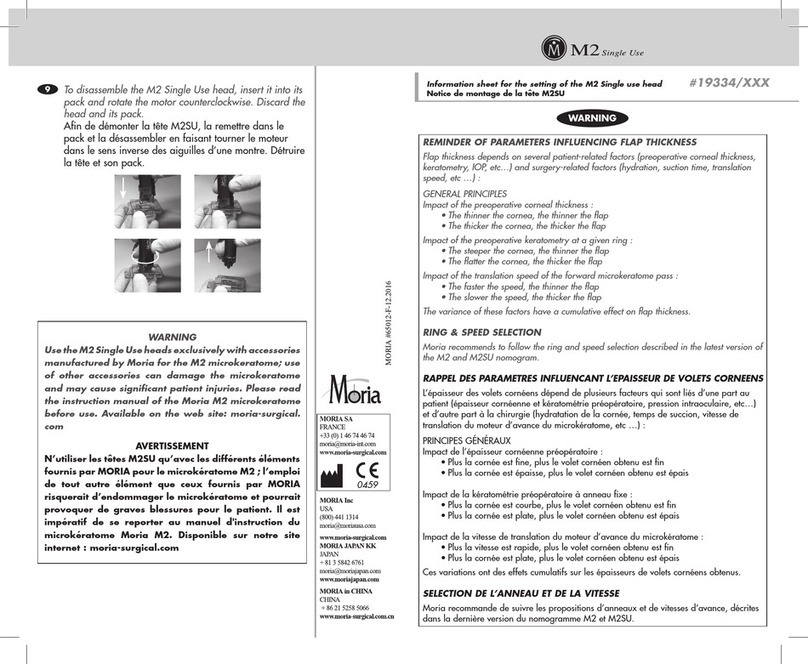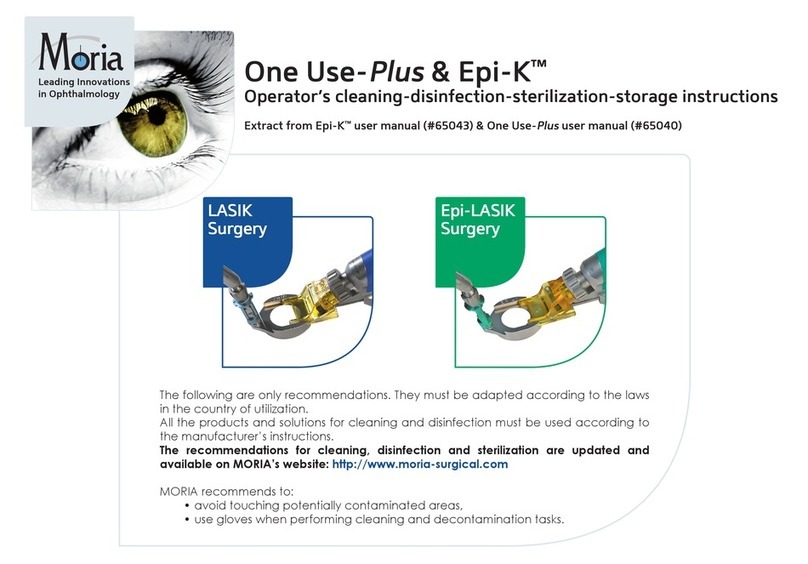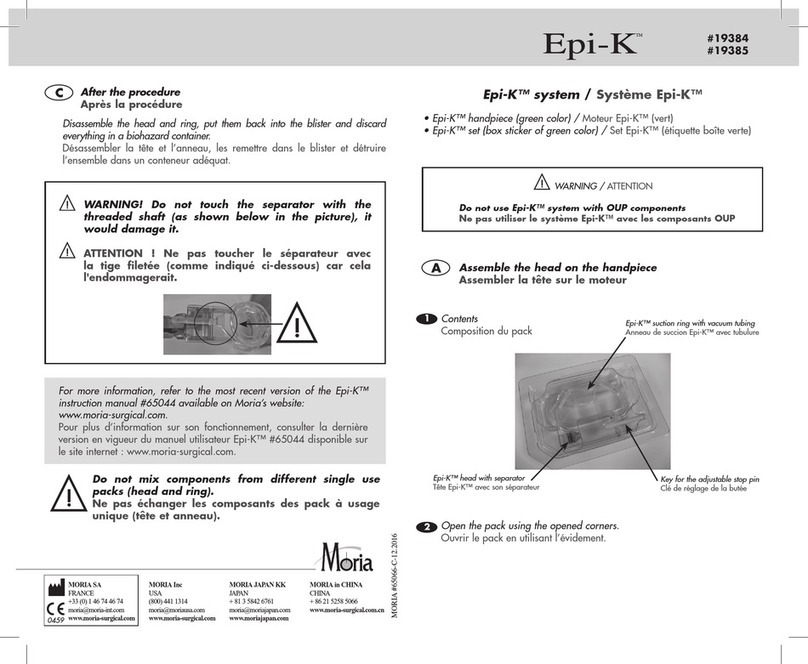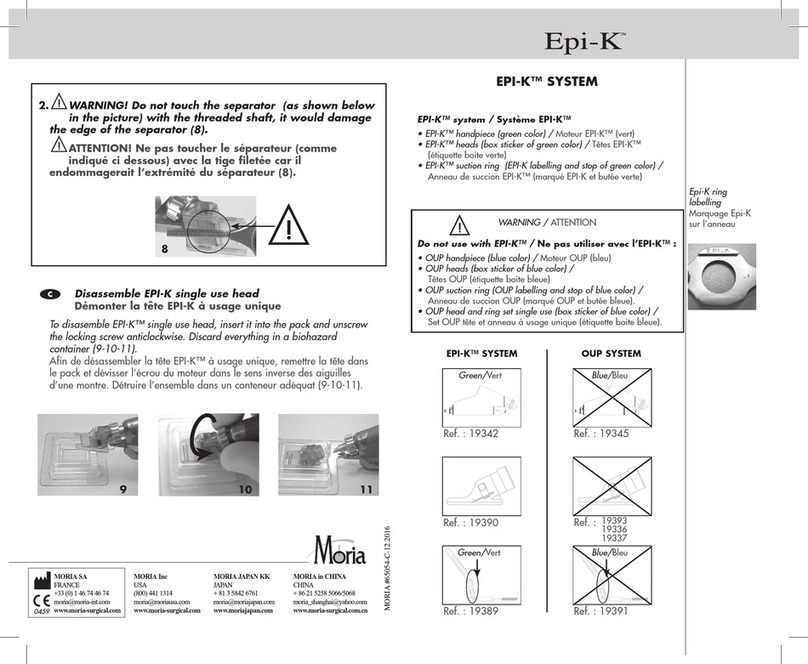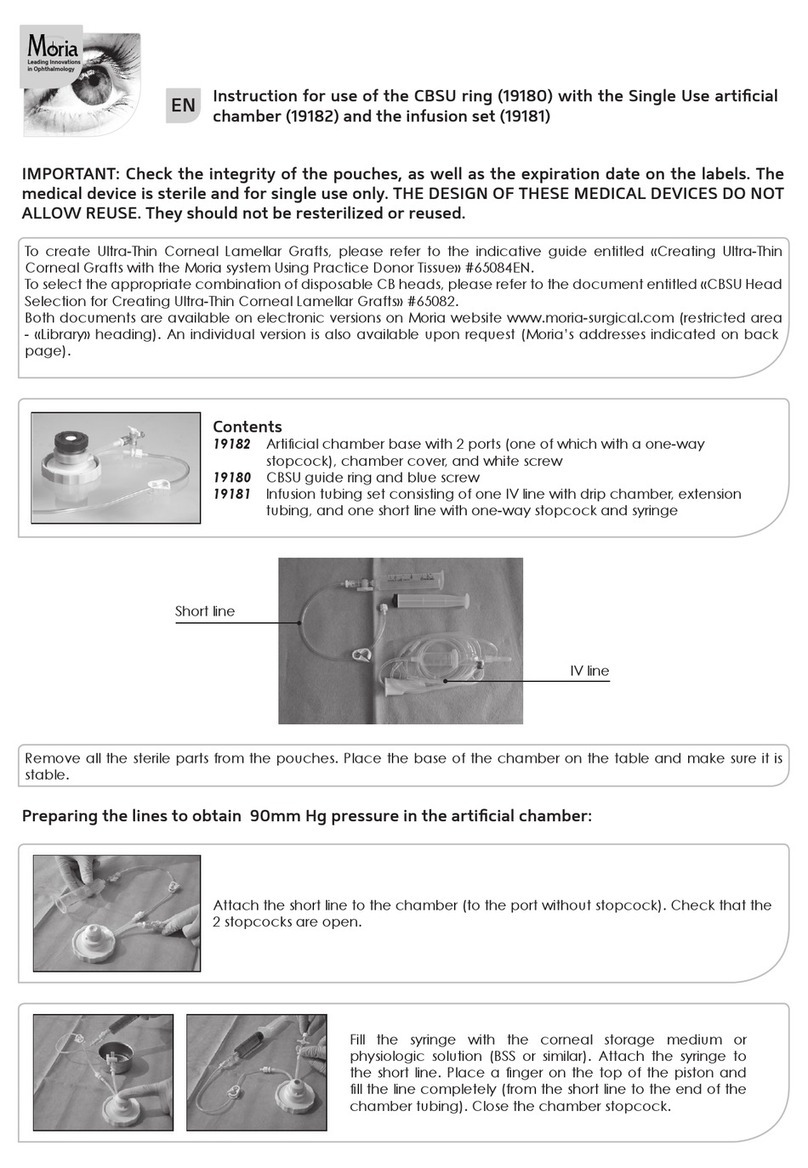
8 MORIA #65005-F-02.2017
6 INSTALLATION AND CONNECTION
Steps What to do IMPORTANT WARNINGS Related
picture
1 Select the head • CB-CBm: select the appropriate pre-calibrated head. The microkeratome
head is labeled on its front side and indicates depth of cut.
• CBSU: select the appropriate pre-calibrated head. The microkeratome
head is labeled on its front side and indicates depth of cut. Disposable
CBSU heads are supplied sterile and for single use only. Check that
package is undamaged, unopened and within the expiration date.
A, B, C
2a CB, CBm: Insert
the blade into the
blade housing of
the head
• Lubricate the CB, CBm head with balanced salt solution or another
appropriate ophthalmic solution.
• Inspect the blade and particularly the cutting edge before and after
insertion. Blades with spots, nicks, debris or other imperfections which
could compromise performance should be discarded.
• Insert the blade into the blade housing of the head, being careful not to
touch the front edge of the blade.
• Press gently on the blade and slide it completely into the head. In case the
blade does not slide smoothly into the head, check for debris or deposits
in the blade housing or on the blade itself. If, after careful checking of the
blade housing, it does not slide, replace the blade with a new one.
• Guide the blade into the head avoiding contact of the cutting edge with
metal part of the head.
• The blade design allows for only one direction for insertion and prevents
incorrect assembly.
• Before mounting the CB or CBm heads onto the turbine motor, make sure
that the blade holder slot is centered within the head (centered within the
female collar).
D, E
2b CBSU: lubricate
the head.
• CBSU heads are supplied sterile with pre-inserted blade to avoid blade
manipulation.
• Inspect the blade and particularly the cutting edge before and after
insertion. Blades with spots, nicks, debris or other imperfections which
could compromise performance should be discarded.
• Place the protective case on a at surface and lift the top of package with
caution.
• Fill the cavity of the plastic package with balanced salt solution or another
appropriate ophthalmic solution to fully wet the head.
3 Assemble the
head into the
turbine
• CB-CBm: The turbine motor screws onto the reusable microkeratome
head. Hold the microkeratome head rmly and screw the threaded nose of
the turbine motor clockwise. Finger tighten only
• CBSU: Keep the head in the package while screwing it onto the turbine
motor (nger tight only).
• Check that the head is securely screwed and tightened to the CB turbine
motor; no rotation of the head should occur.
• If the head is not completely screwed on, the pneumatic turbine shaft will
not drive the blade holder and the blade will not move. Poor or irregular
resection can result from incorrect assembly.
F, G
4 Inspect the head
after assembly
• The head must be perfectly clean inside and outside and free from debris,
particles, oxidation and deposits. There should be no scratches on the
plates. If any, replace the head.
• After assembly and using a microscope, carefully inspect the blade under
high magnication to ensure that it is not damaged. If so: discard it (CBm
blade, CBSU head) in an appropriate container and replace it.






